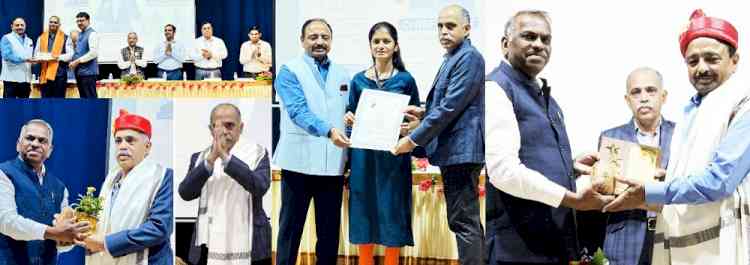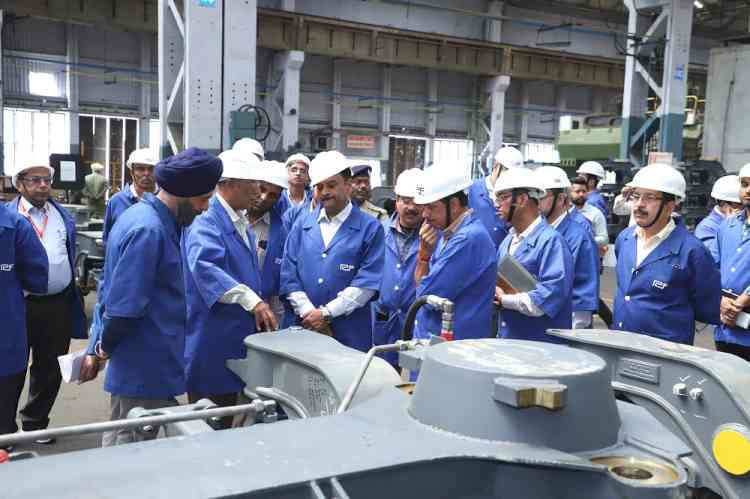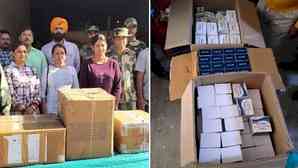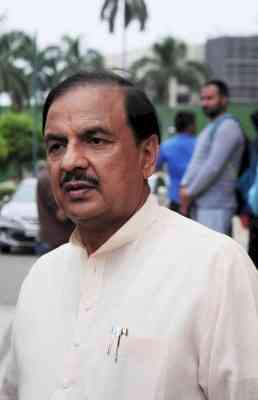Now subregional cooperation: India to host partners this month
New Delhi, July 1 (IANS) Continuing with its proactive engagement with immediate neighbours, the new Indian government is preparing to meet up some of them later this month to catalyse subregional cooperation and build "productive partnerships"...

New Delhi, July 1 (IANS) Continuing with its proactive engagement with immediate neighbours, the new Indian government is preparing to meet up some of them later this month to catalyse subregional cooperation and build "productive partnerships" in areas such as energy and communications.
The talks would probably take place in the last week of July, provided all the partners agree to the dates India has suggested, says External Affairs Minister Sushma Swaraj.
Cooperation on a subregional basis to spur growth dynamism has been the policy praxis in South Asia for some years now. In 1995, the SAARC Council of Ministers had recommended effective measures for a fast-track approach to SAARC, including subregional cooperation with clear objectives. The objectives were defined as the exploitation of complementarities in resource endowment and comparative advantages through cross-border trade and investment flows in a contiguous zone of geographic unity. The India- Bangladesh Joint Statement of January 2010 and the India- Bangladesh Framework Agreement of September 2011 provided the policy framework for breaking new ground in sub-regional cooperation. The harnessing of water resources, development of hydropower and energy, expansion of the telecommunication network, and development of tourism have been identified as possible areas of subregional cooperation to realise the common developmental aspirations and a peaceful and prosperous South Asia.
During her just concluded visit to the Bangladesh capital, Swaraj said the new Indian government would pursue "new approaches and fresh thinking".
"We are convinced that India's development cannot be complete and sustainable unless we succeed in building productive partnerships with our immediate neighbours. We will, therefore, devote our energy to working much more closely with our neighbours in pursuit of our development goals. We will walk the extra mile to create opportunities and to build virtuous cycles of prosperity in the region," she told a distinguished audience at the Bangladesh Institute of International and Strategic studies (BIIS).
India will build upon the ground already broken in subregional cooperation like the building of an "energy corridor" with the commissioning of the Behrampur-Bheramara Grid Interconnection and promote the establishment of diesel, LNG (liquefied natural gas) and telecom highways, she said.
Talks are said to be at an advanced stage to build a pipeline from Siliguri in West Bengal to Parbatipur in Bangladesh to transport high-speed diesel, to be sourced from the Numaligarh Refinery in Assam.
Discussions have also taken place for building a pipeline from Kolkata to Jessore to supply LNG to Bangladesh. The LNG will be imported through Haldia port.
The other initiatives include the India-Bangladesh-Bhutan-Nepal subregional cooperation on power and water, and in transit and connectivity. Strategic analysts say if Bangladesh, Bhutan, Nepal and India can work out an integrated management of the Ganga and Brahmaputra river basins, they will have the leverage to negotiate with China on the upstream.
But what has drawn attention is the plan of India-Bangladesh-Myanmar as a subregion and the benefits it promises when integrated into Southeast and East Asia. The democratization of Myanmar and security cooperation have raised the hopes of the three countries creating a framework of cooperation to net the "bounties of the Sea".
Both Bangladesh and Myanmar have big offshore exploration and production plans in the Bay of Bengal. Both India and Bangladesh, and Bangladesh and Myanmar are negotiating bilateral coastal shipping agreements. Experts say these could be taken up in a trilateral framework. Ships can ply between ports on India's east coast to Bangladeshi ports of Mongla and Chittagong and onward to Myanmar. The Kaladan Multi-Modal Transit Transport Project envisages connectivity between Indian ports on the eastern seacoast and the Sittwe Port in Myanmar and then through riverine transport and by road to Mizoram. India has committed to building a modern river container port at Ashuganj on the Meghna river.
Prior to the partition of the subcontinent in 1947, inland waterways also provided extensive transportation network for the movement of goods and people in northeast South Asia. There were regular steamer services up to Assam through Bangladesh from Calcutta (now Kolkata) via the Brahmaputra river.
Also, there is immense scope for subregional cooperation in the energy sector. Myanmar is rich in gas, thermal and hydro-energy, while India and Bangladesh are energy deficient. Among the three cross-border pipelines that India has been considering, the Myanmar-Bangladesh-India (MBI) pipeline is least prone to security risks.
Says Humayun Kabir of Bangladesh Enterprise Institute: "If we (Bangladesh and India) can take Myanmar on board, then we are going to 1935 when Myanmar also was a part of larger South Asian landmass. So if we can reinvent ourselves, rediscover opportunities that existed and reinforce and expand in future ourselves with the same landmass, I am sure that we will have better future to look forward."
(Saroj Mohanty can be contacted at [email protected])

 cityairnews
cityairnews 

















